.In John Beckett’s blog last week, he tackled the question of how to prepare and explain the concept of Tower Time to Pagan children without giving them nightmares.
John was very upfront about the limitations of his advice as a non-parent, and focused more on practical matters as well as age-appropriate dissemination of knowledge. Because as John wisely said (and it bears repeating here): “Young children shouldn’t be burdened with troublesome projections about the future.”
focused more on practical matters as well as age-appropriate dissemination of knowledge. Because as John wisely said (and it bears repeating here): “Young children shouldn’t be burdened with troublesome projections about the future.”
It was a good answer, and I’m really glad he took the question on. Because if there is a conversation we need to be having in our Heathen, Pagan and Witch communities, it’s how we can support our children during a period of time many are referring to as Tower Time. (If you are new to the concept of ‘Tower Time’, I invite you to read more about it here from the originator of the term. I have also posted some of my musings of Tower Time here.)
The Brave New World of Do All The Things!
As John also wisely observed, Tower Time isn’t some far away apocalypse that we’re supposed to be prepping for – it’s already here. It’s both the background music and protagonist in the drama of our time.
When the pandemic first hit and schools closed, a lot of wonderful community-minded people set up online events for children. Parents in local groups posted overly ambitious Pinterest schedules for their families and children. People made homemade hand sanitizer, grew sourdough starters and worried about where the next rolls of toilet paper would come from.
 We sewed masks, traded supplies with our neighbors, and shared any and all tip-offs we got about where to find help and supplies.
We sewed masks, traded supplies with our neighbors, and shared any and all tip-offs we got about where to find help and supplies.
But one year in and around a half a million dead later (in the US alone), things look pretty different. People are struggling in every way imaginable, previously papered-over issues have been brought into sharp relief, and we may now actually be hitting the ominously named “third quarter”.
Science is winning though. The battle has been long, and the doctors and lab coat warriors courageous. We can at least see a light at the end of the tunnel now.
It’s just going to take a while to get there and there’ll probably be a few more bumps before we do.
Children in Tower Time
And maybe it wouldn’t be so bad if it were only the isolation of the pandemic to deal with? But a month and change ago my child got to watch me pack bug out bags for our family. (Because why not also throw an attempted coup in there as well?)
I mean, we clearly didn’t have enough shit to be getting on with before Y’all Q’aeda rolled up at the Capitol Building after weeks of planning their glorious revolution/liberal purge over on Parler.
And then there’s systemic racism, growing economic inequality, and increasing environmental challenges to deal with as well.
environmental challenges to deal with as well.
The big, crumbling, future-threatening towers are pretty obvious.
But what about our children in all of this?
We can teach skills in preparedness and give the best explanations in the world. Those things are helpful. But our kids are still going to struggle – they are still struggling. And is it any surprise? Hell, we adults have explanations and an entire internet full of preparedness skills to learn and how many of us are struggling?
Children don’t live in boxes – they’re often a lot more perceptive than we give them credit for and sometimes it’s what we don’t say that ends up worrying them the most.
So I guess the question here is how best to support them in this Tower Time?
I’m going to be honest with you right now: I have no answers here. I’m struggling with this too.
(Hopefully) Keeping Our Children Hale and Whole
The question of what we can do for our children in this shitty semi-apocalyptic scenario is one I think a lot of us have struggled with. And depending on where you live and the levels of infection in your community, you may not have a whole lot of choices. (This is me, I live in such a community.)
For the most part adults have gone virtual, and that’s actually turned out to be a pretty great thing for a lot of people. A whole slew of events are suddenly a lot more accessible to more people and I hope that virtual element is something event organizers retain once the world finally reopens.
But as fulfilling as many adults have found the virtual option to be, I imagine it must feel pretty weird for a category of human that ordinarily prefers to play away from the watchful eyes of parents who might tell them off for doing dumb kid stuff.
And sure, we can also focus on teaching them the skills we believe they may need in the years to come (while providing age-appropriate explanations of events). But I think a lot of people are wondering where Pagan or Heathen religious beliefs come into it as well. After all, how many of us turn to our beliefs when times are tough?
As I said before, I really don’t have any solid answers here. I do however, have a few points I’d like to throw out there for consideration should a wider conversation about children happen within our communities.
1. Religion and Resilience
Religion can be a real source of comfort for a lot of people, and has been shown to be a resilience factor in a number of studies now.
According to Dr Michael Ungar who studies resilience, religion can help children to be resilient as well. But as Dr Ungar also points out, it’s more likely the resources that are associated with religion that are the source of that resilience as opposed to the spiritual beliefs themselves. So we can’t exactly be like, “Here’s a deity, pray to them and feel better.”
 Membership in a religion can confer a host of benefits for a child. It can bring relationships and community. Religion can give children a sense of identity in which to anchor themselves. Depending on the religion in question, a child may even get to make decisions within ritual and possibly also gain a feeling of control. Participation in religious groups can also give a child the opportunity to engage in acts of generosity which can make them feel good. Religious communities often meet the physical needs of children too through their charitable programs. And finally, participation in rituals and holidays can help give a child a sense of routine and prove grounding.
Membership in a religion can confer a host of benefits for a child. It can bring relationships and community. Religion can give children a sense of identity in which to anchor themselves. Depending on the religion in question, a child may even get to make decisions within ritual and possibly also gain a feeling of control. Participation in religious groups can also give a child the opportunity to engage in acts of generosity which can make them feel good. Religious communities often meet the physical needs of children too through their charitable programs. And finally, participation in rituals and holidays can help give a child a sense of routine and prove grounding.
So with those points in mind, I think the importance of tackling this subject as a community is clear. If we are to be in-community with others then we must consider the needs of all age groups.
2.a. Storytelling and Cooperative Gaming
One of the needs I think is the hardest for us to meet for our children (again, depending on where we live), is socialization and the need for friendship.
My child has historically avoided Zoom-based hangouts with other children outside of school. The prospect has always seemed about as appealing as a fart in a spacesuit to her. But her Friday afternoon My Little Pony Zoom RPG session is becoming a firm favorite.
 For those of you who have never played RPGs (Role-Playing Games), they are a form of collective storytelling in which players and the person running the game imaginatively co-create story together.
For those of you who have never played RPGs (Role-Playing Games), they are a form of collective storytelling in which players and the person running the game imaginatively co-create story together.
Humans have told stories since some of our earliest days and stories are probably our biggest consumable. They are the TV shows and movies we watch, the books we read, and games we play. Not all forms of story consumption are equal though, and some confer benefits that others do not. For example, people who read fiction have consistently been shown to have stronger social cognition abilities than those who don’t. When it comes to TV and movies, studies on mirror neurons suggest that the same parts of the brain that are activated when you perform a goal-oriented action are also activated when you view someone else doing it too! And RPGs have been shown to enable people to fulfill a range of social needs (such as friendship maintenance).
In short, story (depending on how you consume it),can be wonderful for everything from social cognition and friendship maintenance, to fulfilling social needs and possibly maintaining or increasing neuroplasticity by activating areas of the brain you may not otherwise ordinarily use.
Story is important, but perhaps it becomes even more so to socially isolated children?
2.b. Story and the Child
Now I’m not saying to give them a free reign over TV and Minecraft. Just that in a world of inorganic Zoom-based interactions, something like gathering to play in a well-loved fictional setting (such as My Little Pony), may be a good option for social interaction with other kids. And the cool thing about fantastical settings, is that even with parental supervision/help, the children can still feel relatively free to explore (which I think probably makes everything so much less awkward for them).
After all, no one is going to get into trouble for “teleporting the bad guy’s head off”.
Moreover, depending on the age of the child, RPGs can and often do include mythological themes (some of them particularly well researched) and can be an avenue for learning Pagan and Heathen mythologies.
mythological themes (some of them particularly well researched) and can be an avenue for learning Pagan and Heathen mythologies.
Finally, RPGs can also be played within the family and provide a safe outlet for difficult emotions. Which I think we can all agree is something a lot of us struggle with from time to time.
Just a warning though, children’s storytelling can be quite twisted and bizarre (and this is apparently super normal).
3. Tower Time is The Long Game
Finally, I just want to talk about the ‘long game’ here. Because Tower Time is not going away any time soon, and nor will its mark upon us.
Pandemics, societal unrest, attempted coups and environmental disaster are all high stress situations/events. Even if we were to solve all the things in the most perfect way, the effects of this era are going to haunt us all for years to come. And when it comes to the children growing up in this time, I would guess those effects are going to be far more profound.
This is something that will affect this entire generation and I think we need to be prepared for that.
The “Little” Things
Before finishing this insanely long post though, I just want to say something that I hope brings hope to those of you out there who are looking at your kids and feeling kind of powerless and burned out by everything:
Don’t underestimate the little things.
When I look back to my own childhood growing up and the challenges my generation faced there, the things I keep coming back to are the “little” ways in which my parents consistently showed love. We were poor – very poor in fact. We were the kind of poor where we had back-up plans that involved foraging, setting snares on the local moors, and gathering wood (my dad kept the old chimney in place for reasons). I was the kid in homemade clothes with thrift store Christmas gifts bulking up the presents my parents scrimped and saved to get us all year. But although times were clearly not great for us then, my childhood isn’t some blot in my memory.
chimney in place for reasons). I was the kid in homemade clothes with thrift store Christmas gifts bulking up the presents my parents scrimped and saved to get us all year. But although times were clearly not great for us then, my childhood isn’t some blot in my memory.
I remember the love there. The work my mum put into those clothes she knitted and stitched for us. Her hugs. I think about the way her voice still sounds like a hug even 3,500 miles away. And I think of traveling with my dad in his truck during school vacations and talking about all kinds of things. Because that’s when I got to see him the most.
I’m no expert on this. And I think what our kids are going through now is way worse than anything I experienced. But still, I think those so-called “little things” play a big role.
And we shouldn’t underestimate them. They’re not a “fix” by any stretch, but I think knowing you’re loved maybe goes a long way. And I dearly hope the conversation about how we and our communities can support children during these trying times takes root.
Until the next time.
Be well.



 dream journal that lives in an app on my phone with a secondary residence in the cloud. Other people have dedicated paper and pen journals that they keep in a handy-to-reach place for when they wake up.
dream journal that lives in an app on my phone with a secondary residence in the cloud. Other people have dedicated paper and pen journals that they keep in a handy-to-reach place for when they wake up. This is a space I find myself in quite often. I’m never alone there but in classes full of what I suspect may be other sleeping witches. The environment is extremely strict – it would make a Victorian school room look lax. And there’s an underlying sense of danger should you mess up. But as with all schools, there are lessons here too (and not only in etiquette). I’ve received some of my most interesting magical lessons from this school, and yes, they often assign homework too.
This is a space I find myself in quite often. I’m never alone there but in classes full of what I suspect may be other sleeping witches. The environment is extremely strict – it would make a Victorian school room look lax. And there’s an underlying sense of danger should you mess up. But as with all schools, there are lessons here too (and not only in etiquette). I’ve received some of my most interesting magical lessons from this school, and yes, they often assign homework too.
 Ever since I went to Iceland in 2018, I feel like a part of myself sort of dug in there like some kind of anchor for when I die. There was a sense of home to Iceland, and so it’s probably not surprising that I end up there quite often in my dreams. Out of all the recurring places, Iceland, and especially northern Iceland, probably features the most. And these dreams almost always come with a message or involve elves in some way.
Ever since I went to Iceland in 2018, I feel like a part of myself sort of dug in there like some kind of anchor for when I die. There was a sense of home to Iceland, and so it’s probably not surprising that I end up there quite often in my dreams. Out of all the recurring places, Iceland, and especially northern Iceland, probably features the most. And these dreams almost always come with a message or involve elves in some way. When we think about the Otherworld, I think there’s a tendency to imagine it as some old-fashioned, almost Renn-Faire-looking kind of deal. And don’t get me wrong – in my experience, those places do exist. But I’ve also found that there are a lot of modern-looking places associated with the Otherworld as well.
When we think about the Otherworld, I think there’s a tendency to imagine it as some old-fashioned, almost Renn-Faire-looking kind of deal. And don’t get me wrong – in my experience, those places do exist. But I’ve also found that there are a lot of modern-looking places associated with the Otherworld as well.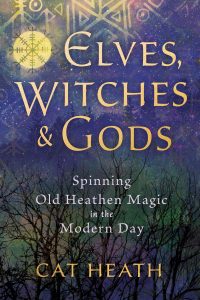 Witches and Gods: Spinning Old Heathen Magic in Modern Day. If a somewhat atypical look at Heathen worldview and magic with an emphasis on experimentation and practice interests you, then it may be right up your alley.
Witches and Gods: Spinning Old Heathen Magic in Modern Day. If a somewhat atypical look at Heathen worldview and magic with an emphasis on experimentation and practice interests you, then it may be right up your alley.  something being unleashed into the world, and I knew then and there that what I had spoken into the world would come to pass; that my victim would fall from his ladder at work.
something being unleashed into the world, and I knew then and there that what I had spoken into the world would come to pass; that my victim would fall from his ladder at work.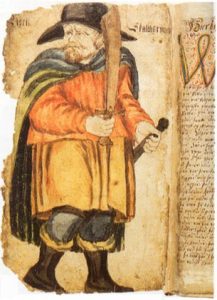
 is sufficiently complete for now.
is sufficiently complete for now.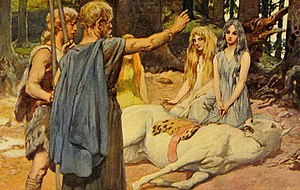 “Father of Galdr” (as he was named in Baldrs Draumar) is both explicit and well-established, and not just in the ON sources either (Simek 242). Woden is the only Heathen god to be mentioned in the OE magico-medical manuscripts; it is he who rests at the center of the so-called “Nine Herbs Charm” found in the Lacnunga. And it is Woden who is depicted chanting a spell over an injured horse’s leg in the Second Merseburg Charm (Waggoner, xv).
“Father of Galdr” (as he was named in Baldrs Draumar) is both explicit and well-established, and not just in the ON sources either (Simek 242). Woden is the only Heathen god to be mentioned in the OE magico-medical manuscripts; it is he who rests at the center of the so-called “Nine Herbs Charm” found in the Lacnunga. And it is Woden who is depicted chanting a spell over an injured horse’s leg in the Second Merseburg Charm (Waggoner, xv).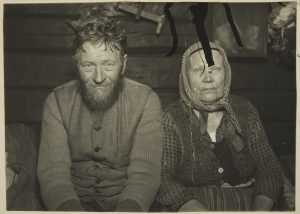
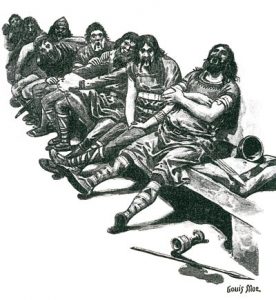 “These men asked Halfdan to attack Hardbeen and his champions man by man; and he not only promised to fight, but assured himself the victory with most confident words. When Hardbeen heard this, a demoniacal frenzy suddenly took him; he furiously bit and devoured the edges of his shield; he kept gulping down fiery coals; he snatched live embers in his mouth and let them pass down into his entrails; he rushed through the perils of crackling fires; and at last, when he had raved through every sort of madness, he turned his sword with raging hand against the hearts of six of his champions. It is doubtful whether this madness came from thirst for battle or natural ferocity.”
“These men asked Halfdan to attack Hardbeen and his champions man by man; and he not only promised to fight, but assured himself the victory with most confident words. When Hardbeen heard this, a demoniacal frenzy suddenly took him; he furiously bit and devoured the edges of his shield; he kept gulping down fiery coals; he snatched live embers in his mouth and let them pass down into his entrails; he rushed through the perils of crackling fires; and at last, when he had raved through every sort of madness, he turned his sword with raging hand against the hearts of six of his champions. It is doubtful whether this madness came from thirst for battle or natural ferocity.”
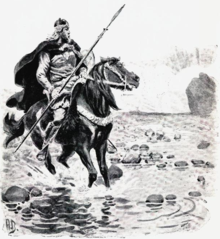




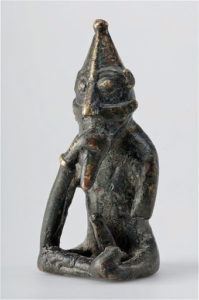 figure. Unsurprisingly, he’s been interpreted as a representation of Freyr. But for all of his blessings beneath the belt, this ‘God of the World’ is all of 7cm/2.75” tall. So, pocket-sized for your convenience. Just ask Ingimund from the Vatnsdæla saga about his missing Freyr amulet..
figure. Unsurprisingly, he’s been interpreted as a representation of Freyr. But for all of his blessings beneath the belt, this ‘God of the World’ is all of 7cm/2.75” tall. So, pocket-sized for your convenience. Just ask Ingimund from the Vatnsdæla saga about his missing Freyr amulet..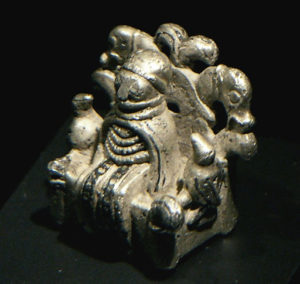
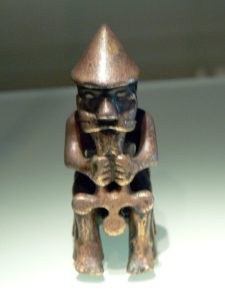 6.7cm/2.6” (with his hammer taking up a good deal of those centimeters/inches).
6.7cm/2.6” (with his hammer taking up a good deal of those centimeters/inches).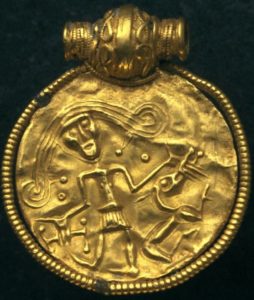
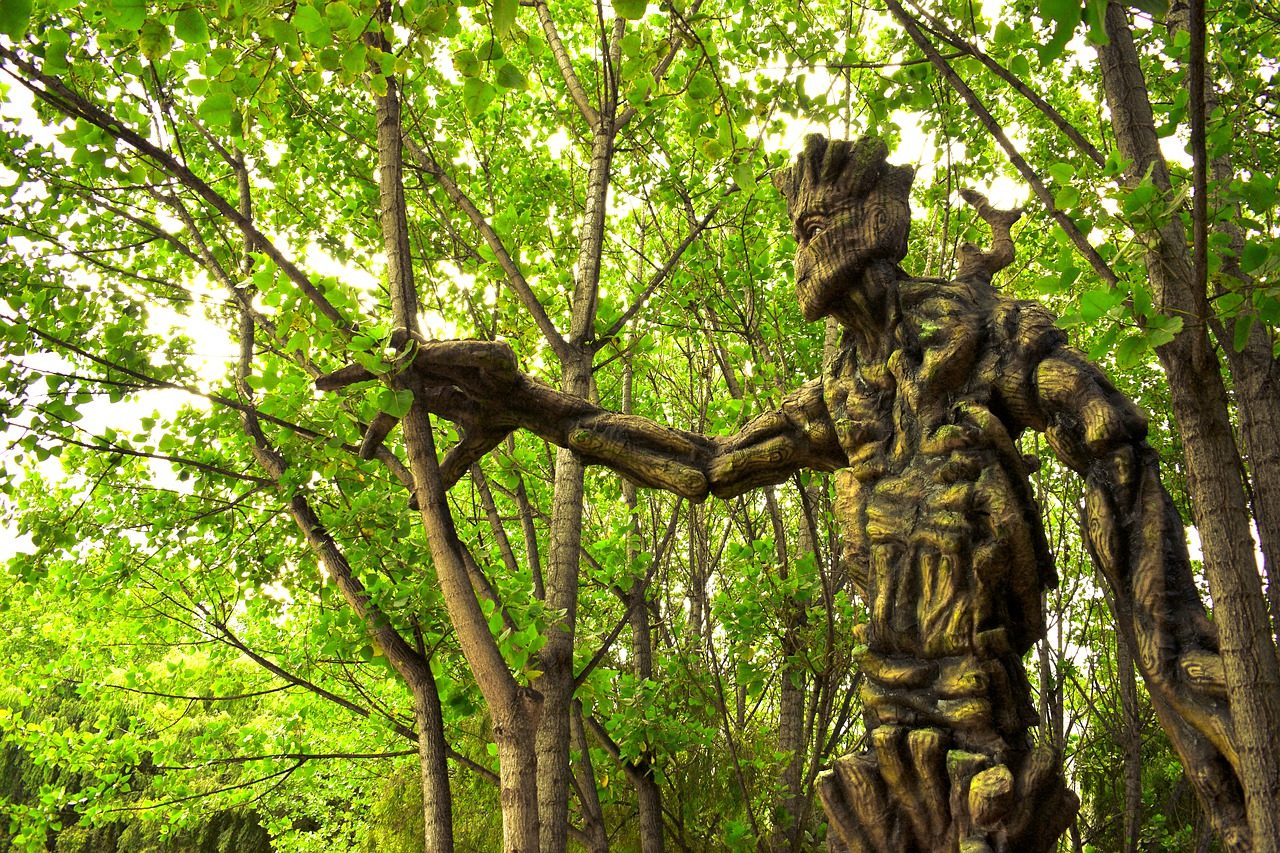
 de France. In one of her lais, Bisclavret, a man-turned-werewolf is prevented from returning to his shape of birth by an unfaithful lover hiding his clothes. You see, when it comes to masking and its sibling, shapeshifting,
de France. In one of her lais, Bisclavret, a man-turned-werewolf is prevented from returning to his shape of birth by an unfaithful lover hiding his clothes. You see, when it comes to masking and its sibling, shapeshifting, 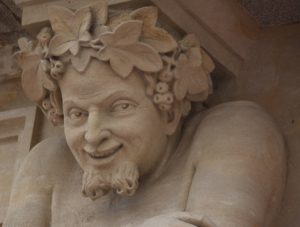 ”Woden worhte weos, wuldor alwalda,
”Woden worhte weos, wuldor alwalda,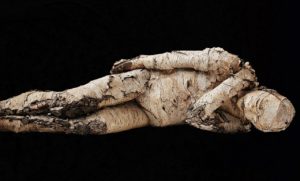 the island of Sámsey. There they encounter a ‘tree-man’ who speaks to them of his purpose and origin. He was the product of sacrifice, and had been made to bring about the deaths of men in the southern part of Sámsey. But over the years, he’d become overgrown and his clothes and flesh rotted away.
the island of Sámsey. There they encounter a ‘tree-man’ who speaks to them of his purpose and origin. He was the product of sacrifice, and had been made to bring about the deaths of men in the southern part of Sámsey. But over the years, he’d become overgrown and his clothes and flesh rotted away. makes the sacrifices until he receives a favorable oracle when he has a piece of driftwood brought in and fashioned into the shape of a wooden man. Then with “the monstrous witchcraft and python’s breath” of those two sisters, as well as the heart of a man sacrificed for the purpose and the proper attire for a man, they sent their tree-man, now named Þorgarðr, into the world to kill Þorleif (North 93 – 95).
makes the sacrifices until he receives a favorable oracle when he has a piece of driftwood brought in and fashioned into the shape of a wooden man. Then with “the monstrous witchcraft and python’s breath” of those two sisters, as well as the heart of a man sacrificed for the purpose and the proper attire for a man, they sent their tree-man, now named Þorgarðr, into the world to kill Þorleif (North 93 – 95).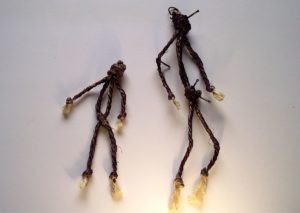
 them life. And this is where Óðinn steps up and breathes önd into them.
them life. And this is where Óðinn steps up and breathes önd into them. with magic and necromancy. And we can infer that Skaldic craft was itself considered magical. We can also look at the story of Egill Skallagrimson covering his head with his cloak in order to compose poetry in Egill’s saga, and possibly infer certain practices related to the getting of inspiration (as Jón Hnefill Aðalsteinsson theorizes in <em> Going Under the Cloak</em>).
with magic and necromancy. And we can infer that Skaldic craft was itself considered magical. We can also look at the story of Egill Skallagrimson covering his head with his cloak in order to compose poetry in Egill’s saga, and possibly infer certain practices related to the getting of inspiration (as Jón Hnefill Aðalsteinsson theorizes in <em> Going Under the Cloak</em>). ‘divine breath’ to fill the poet, bringing vision and other spiritual gifts.
‘divine breath’ to fill the poet, bringing vision and other spiritual gifts. in Northern Iceland. I’d just been under the cloak and was thinking about the stories surrounding the falls when I found myself wondering about Óðinn in Iceland. Suddenly, my attention was drawn to the sound of heavy wing beats that somehow sounded louder than the roar of the waterfall. Two ravens were flying across the width of the falls and their wings were all I could hear. Time became weighty and the world more ‘real’. I became intensely aware of my breath, and suddenly I was not just myself anymore but engaging in a communion of sorts with the winds, the world around, and a certain one-eyed god. I was a part of the whole rather than a singular being. The ravens turned and flew towards me until they drew level and veered away, taking the moment with them.
in Northern Iceland. I’d just been under the cloak and was thinking about the stories surrounding the falls when I found myself wondering about Óðinn in Iceland. Suddenly, my attention was drawn to the sound of heavy wing beats that somehow sounded louder than the roar of the waterfall. Two ravens were flying across the width of the falls and their wings were all I could hear. Time became weighty and the world more ‘real’. I became intensely aware of my breath, and suddenly I was not just myself anymore but engaging in a communion of sorts with the winds, the world around, and a certain one-eyed god. I was a part of the whole rather than a singular being. The ravens turned and flew towards me until they drew level and veered away, taking the moment with them.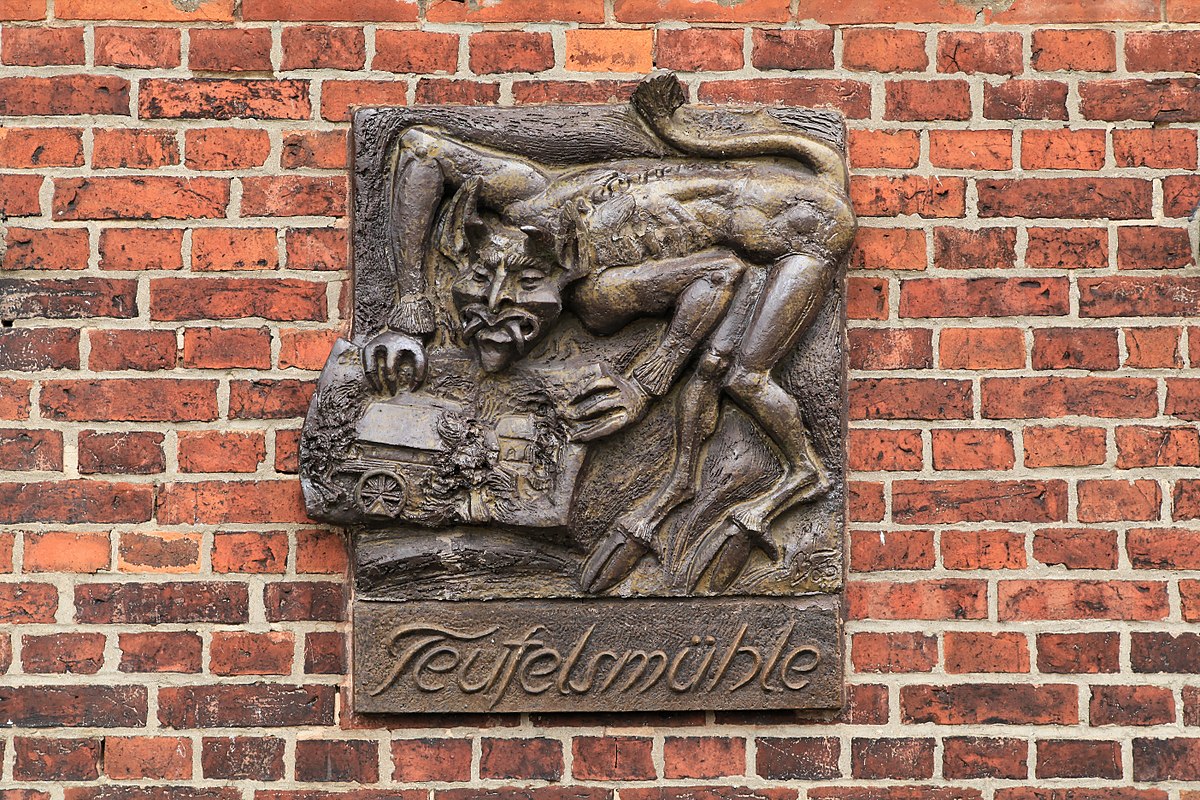
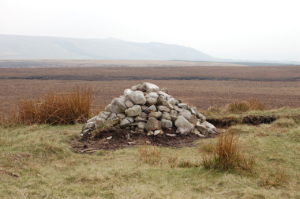 were though, and soon co-workers began to notice.
were though, and soon co-workers began to notice. trying to look as harmless as possible).
trying to look as harmless as possible).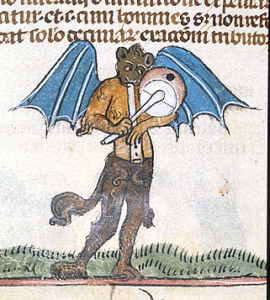
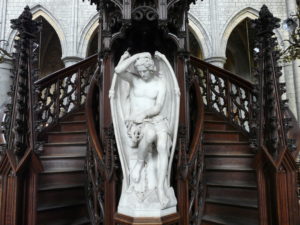


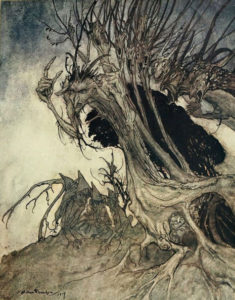 inspiring and capable of producing that curious combination of “dread, veneration, and wonder”. (If your mind found that incongruous in any way, then you have some unpacking to do.)
inspiring and capable of producing that curious combination of “dread, veneration, and wonder”. (If your mind found that incongruous in any way, then you have some unpacking to do.)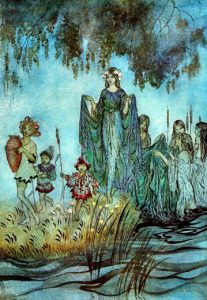
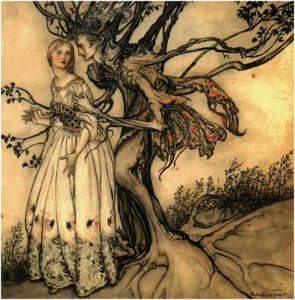 Other beings have produced awe to a lesser degree in me. Instead of outright terror, there’s an edge of caution. Over the years, I’ve noticed that these tend to be the beings who seem less capable of harming me, or at least can only harm me to a lesser degree. And so I’ve learned to listen to those feelings. When not obscured by bullshit ideas garnered from Victorian nonsense and scientific materialism, those feelings can be a useful guide to who you are dealing with and how careful you should be.
Other beings have produced awe to a lesser degree in me. Instead of outright terror, there’s an edge of caution. Over the years, I’ve noticed that these tend to be the beings who seem less capable of harming me, or at least can only harm me to a lesser degree. And so I’ve learned to listen to those feelings. When not obscured by bullshit ideas garnered from Victorian nonsense and scientific materialism, those feelings can be a useful guide to who you are dealing with and how careful you should be.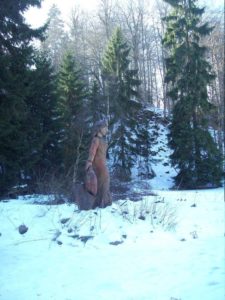 Hulle set not far from Wintersbach. And this is the tale that led me down the rabbithole so to speak. First came the spinning, and then more research and a pilgrimage of sorts to the Hollenteich up on the Hoher Meißner. There, on a frozen pond before a modern statue, I had a deeply holy (and unexpected) experience.
Hulle set not far from Wintersbach. And this is the tale that led me down the rabbithole so to speak. First came the spinning, and then more research and a pilgrimage of sorts to the Hollenteich up on the Hoher Meißner. There, on a frozen pond before a modern statue, I had a deeply holy (and unexpected) experience. But one day, while spinning at the side of a well, she accidentally drops her spindle into the well after pricking her finger.
But one day, while spinning at the side of a well, she accidentally drops her spindle into the well after pricking her finger. made sure to cut herself and throw a spindle into the well before she herself took the plunge is perhaps telling.
made sure to cut herself and throw a spindle into the well before she herself took the plunge is perhaps telling. First the dead pass over a thorny moor (‘Whinny muir’) that will prick them. Then they must pass over the ‘Brig o’Dread’. And then finally, because this is a Christian song, they must roast in Purgatory for a while. But at every turn, these tortures can be mitigated by one’s behavior in life. Those who gave the charity of socks and shoes (‘hosen or shoon’) will find socks and shoes to protect them on the thorny moor. Those who gave the charity of food and drink, will not be shrunk and burned by Purgatory’s fires. (The Brig o’Dread is its own challenge, and I’ll be taking a look at it in the next section.)
First the dead pass over a thorny moor (‘Whinny muir’) that will prick them. Then they must pass over the ‘Brig o’Dread’. And then finally, because this is a Christian song, they must roast in Purgatory for a while. But at every turn, these tortures can be mitigated by one’s behavior in life. Those who gave the charity of socks and shoes (‘hosen or shoon’) will find socks and shoes to protect them on the thorny moor. Those who gave the charity of food and drink, will not be shrunk and burned by Purgatory’s fires. (The Brig o’Dread is its own challenge, and I’ll be taking a look at it in the next section.) century Icelandic poet Þórbjörn Brúnason made a curious mention of the ‘apples of Hel’. And apples also featured as grave goods in both Scandinavian and early English graves. But apples are not only associated with the dead in Norse lore. The apple seems to be both a food for the dead and a substance of renewal for the gods.(Davidson, Gods and Myths of Northern Europe, 165-166).
century Icelandic poet Þórbjörn Brúnason made a curious mention of the ‘apples of Hel’. And apples also featured as grave goods in both Scandinavian and early English graves. But apples are not only associated with the dead in Norse lore. The apple seems to be both a food for the dead and a substance of renewal for the gods.(Davidson, Gods and Myths of Northern Europe, 165-166). ”Readers familiar with Neil Gaiman’s Sandman series might find some parallels here: the mundus imaginalis is like “The Dreaming,” a realm populated by the dreaming of every being, living or dead, god or human or plant, where each “place” has a geography only inasmuch as it’s necessary for those who visit to travel within it and find the same place again (or visit a place another once visited). In fact, Gaiman likely stole the entire idea for his cosmology from Corbin’s essay.”
”Readers familiar with Neil Gaiman’s Sandman series might find some parallels here: the mundus imaginalis is like “The Dreaming,” a realm populated by the dreaming of every being, living or dead, god or human or plant, where each “place” has a geography only inasmuch as it’s necessary for those who visit to travel within it and find the same place again (or visit a place another once visited). In fact, Gaiman likely stole the entire idea for his cosmology from Corbin’s essay.” of map to this road to the afterlife. First the person dies/passes through water, and then they encounter two different trials. Yet the trials in both sources are far from insurmountable, presenting little problem for the compassionate person.
of map to this road to the afterlife. First the person dies/passes through water, and then they encounter two different trials. Yet the trials in both sources are far from insurmountable, presenting little problem for the compassionate person.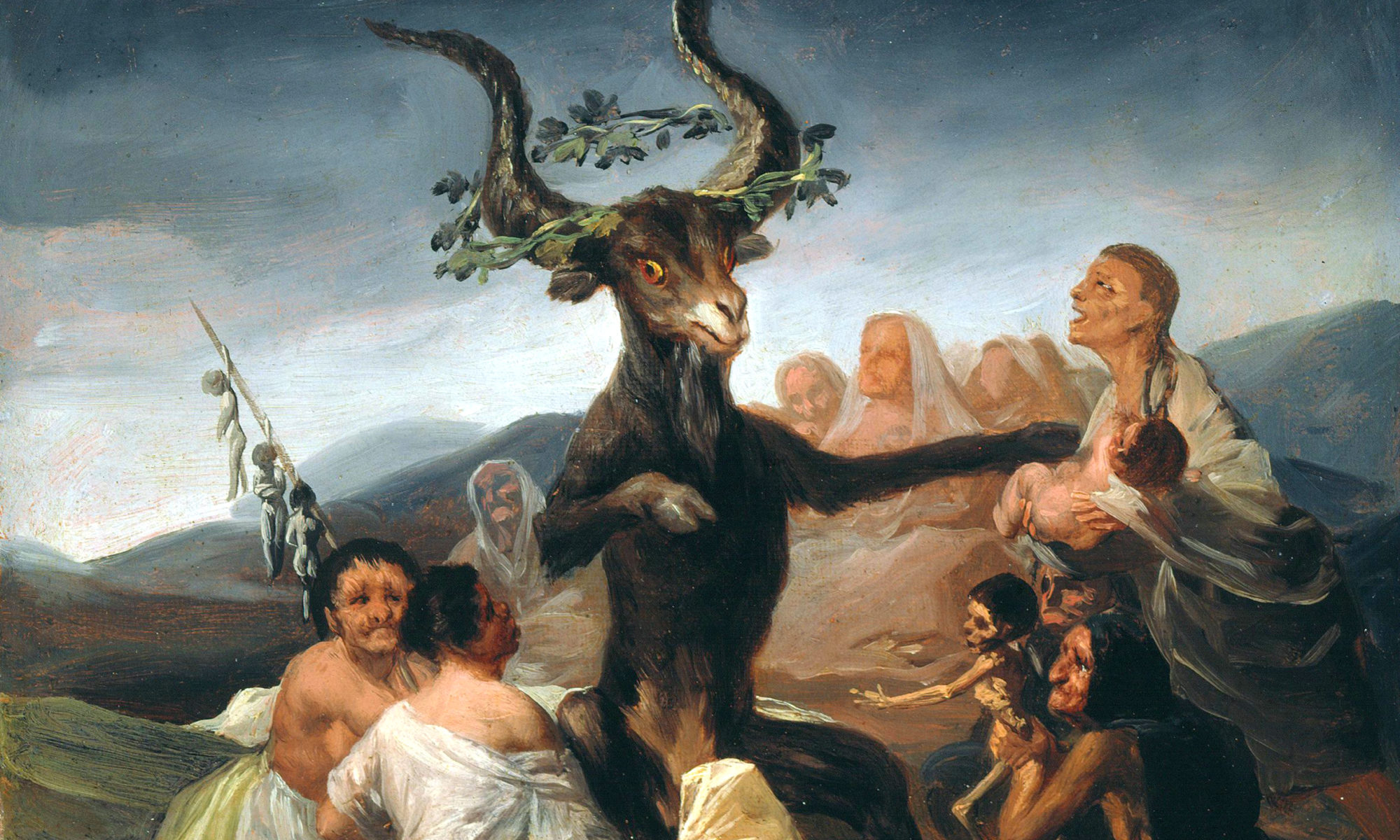
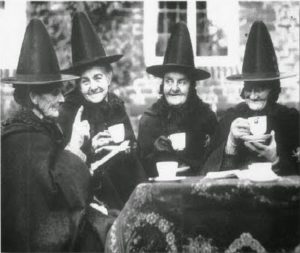 the power of loneliness, I guess. And I was lonely back then. I was a lone witch living in the kind of place people would shout threats at me on the street for being a witch (which they’d seemingly discerned from my general vibe as opposed to me being out of the broom cupboard).
the power of loneliness, I guess. And I was lonely back then. I was a lone witch living in the kind of place people would shout threats at me on the street for being a witch (which they’d seemingly discerned from my general vibe as opposed to me being out of the broom cupboard).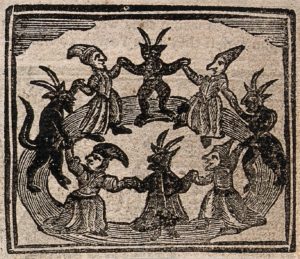 the fairy royalty or devilish figure to whom they are ultimately pacted (Wilby 84, 85). For the Early Modern person, it was the familiar that made the witch, but that familiar (though often appearing as a solitary figure),
the fairy royalty or devilish figure to whom they are ultimately pacted (Wilby 84, 85). For the Early Modern person, it was the familiar that made the witch, but that familiar (though often appearing as a solitary figure), 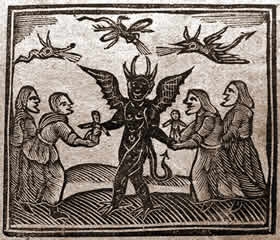 whose testimony we get the first attestation of the word ‘coven’), bears little resemblance to this more modern familial imagining. Where members of modern covens center their bonds with each other, it is the otherworldly power to whom each witch (and familiar) is pledged that is at the center of any group or proceedings in the historical sources (Wilby 81). This is about the familiar rather than the familial, and rather than protecting her ‘sisters’ at any cost as an Owens would, Isobel named the members of her group in her testimony (apparently without the use of torture to loosen her lips). Which can seem quite treacherous until you consider that for her, her main loyalty was probably not to any humans at all.
whose testimony we get the first attestation of the word ‘coven’), bears little resemblance to this more modern familial imagining. Where members of modern covens center their bonds with each other, it is the otherworldly power to whom each witch (and familiar) is pledged that is at the center of any group or proceedings in the historical sources (Wilby 81). This is about the familiar rather than the familial, and rather than protecting her ‘sisters’ at any cost as an Owens would, Isobel named the members of her group in her testimony (apparently without the use of torture to loosen her lips). Which can seem quite treacherous until you consider that for her, her main loyalty was probably not to any humans at all.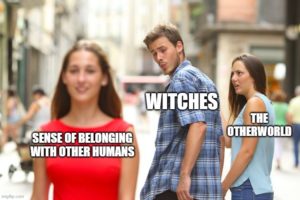 occurred that I believe we need to pay attention to here.
occurred that I believe we need to pay attention to here.